
|
Now it is bright as 6.3 mag (Sept. 2, Marco Goiato). It is expected to brighten up to 4-5 mag from autumn to winter. It keeps observable in excellent condition until autumn in the Southern Hemisphere. In the Northern Hemisphere, it keeps unobservable until late November.
Date(TT) R.A. (2000) Decl. Delta r Elong. m1 Best Time(A, h)
Sept.12 14 58.22 -50 50.8 1.347 1.418 72 6.2 19:38 ( 34,-11)
Sept.19 14 47.71 -45 44.0 1.446 1.326 62 6.1 19:27 ( 41,-11)
|

|
Now it is 11.7 mag (Aug. 7, Marco Goiato). It will brighten up to 11 mag autumn. In this apparition, it is observable until the highlight while the comet is brightening.
Date(TT) R.A. (2000) Decl. Delta r Elong. m1 Best Time(A, h)
Sept.12 14 56.72 -13 57.0 1.926 1.618 57 11.1 19:38 ( 61, 14)
Sept.19 15 15.08 -15 29.9 1.949 1.601 55 11.0 19:27 ( 60, 14)
|

|
It brightened up to 3.7 mag and became a naked eye comet in mid January (Jan. 13, Marek Biely). Now it is fading. But it is bright as 10.6 mag still now (Sept. 11, Maik Meyer). In the Northern Hemisphere, it keeps observable for a long time until the comet fades out. It locates extremely low in the Southern Hemisphere, and it will be unobservable in late September.
Date(TT) R.A. (2000) Decl. Delta r Elong. m1 Best Time(A, h)
Sept.12 15 55.14 39 55.0 3.441 3.259 71 11.0 19:38 (112, 53)
Sept.19 16 2.69 37 29.9 3.556 3.332 69 11.2 19:27 (108, 51)
|

|
It approached to the sun down to 0.3 a.u. on July 6, and brighted up to 3.9 mag (July 6, Thomas Lehmann). Now it is 10.7 mag (Sept. 2, Marco Goiato). In the Northern Hemisphere, it keeps observable until the comet fades out. It will not be observable after this in the Northern Hemisphere.
Date(TT) R.A. (2000) Decl. Delta r Elong. m1 Best Time(A, h)
Sept.12 13 12.25 -40 13.7 1.978 1.569 51 11.5 19:38 ( 54,-20)
Sept.19 13 35.04 -42 51.3 2.126 1.689 51 11.9 19:27 ( 51,-20)
|
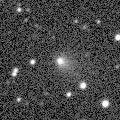
|
Now it is so bright as 10.6 mag visually (Sept. 9, Neil Norman). It is observable at 10-12 mag from autum to next spring in excellent condition in the Northern Hemisphere. It keeps unobservable in the Southern Hemisphere.
Date(TT) R.A. (2000) Decl. Delta r Elong. m1 Best Time(A, h)
Sept.12 3 10.70 73 32.9 2.042 2.343 94 11.9 3:50 (180, 52)
Sept.19 3 14.66 78 9.3 1.986 2.308 95 11.8 3:27 (180, 47)
|
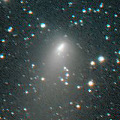
|
It brightened rapidly up to 10.4 mag from July to August (July 18, Maik Meyer). Now it is fading, but it is bright as 11.5 mag still now (Sept. 8, Juan Jose Gonzalez). It is observable in good condition in the Northern Hemisphere, but it will be getting lower gradually in the Southern Hemisphere.
Date(TT) R.A. (2000) Decl. Delta r Elong. m1 Best Time(A, h)
Sept.12 18 47.00 43 58.2 1.168 1.698 102 12.0 19:38 (163, 81)
Sept.19 18 48.75 44 36.8 1.234 1.724 100 12.2 19:27 (152, 79)
|
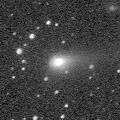
|
Now it is 11.2 mag (Sept. 8, Juan Jose Gonzalez). It keeps bright as 12 mag from August to October. In the Northern Hemisphere, it is getting higher gradually, and it keeps observable in good condition after this. In the Southern Hemisphere, it keeps low until November.
Date(TT) R.A. (2000) Decl. Delta r Elong. m1 Best Time(A, h)
Sept.12 8 24.61 22 37.6 1.780 1.296 45 12.1 4:14 (260, 27)
Sept.19 8 48.73 21 37.8 1.787 1.323 46 12.1 4:20 (262, 28)
|
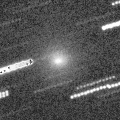
|
It brightened rapidly in mid August. Now it is very bright as 11.2 mag (Aug. 28, Juan Jose Gonzalez). Secondary component is also visible as 14.0 mag (Aug. 28, Michael Jager). In the Northern Hemisphere, it keeps observable in good condition in the morning sky. It keeps locating extremely low from summer to autumn.
Date(TT) R.A. (2000) Decl. Delta r Elong. m1 Best Time(A, h)
Sept.12 8 32.13 18 22.6 1.185 0.819 42 12.1 4:14 (263, 23)
Sept.19 8 56.76 15 1.9 1.262 0.869 43 12.6 4:20 (268, 23)
|
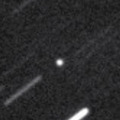
|
Now it is 14.3 mag (Sept. 6, Sandor Szabo). Finally it began to be visible visually. It will brighten very rapidly after this. It will brighten up to 11 mag from autumn to winter. But it locates low at that time.
Date(TT) R.A. (2000) Decl. Delta r Elong. m1 Best Time(A, h)
Sept.12 15 34.83 -13 58.9 1.670 1.563 66 12.5 19:38 ( 54, 21)
Sept.19 15 51.63 -15 48.9 1.688 1.535 63 12.2 19:27 ( 53, 19)
|
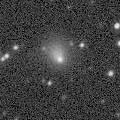
|
Now it is 13.7 mag (Aug. 26, Hiroshi Abe). It will pass close to the earth from spring to summer in 2016, and it is expected to be observable at 6-7 mag in good condition. In the Northern Hemispehre, it keeps observable in excellent condition until winter. In the Southern Hemisphere, it keeps very low until winter.
Date(TT) R.A. (2000) Decl. Delta r Elong. m1 Best Time(A, h)
Sept.12 5 44.17 38 30.2 3.205 3.227 82 13.1 4:14 (253, 64)
Sept.19 5 41.52 39 18.7 3.002 3.153 89 12.9 4:20 (250, 71)
|
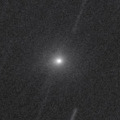
|
New bright comet. Now it is 11.6 mag (Aug. 18, Chris Wyatt). In the Southern Hemisphere, it keeps observable in the evening sky until the comet becomes fainter than 18 mag in winter. In the Northern Hemisphere, it will never be observable again.
Date(TT) R.A. (2000) Decl. Delta r Elong. m1 Best Time(A, h)
Sept.12 14 30.69 -38 55.6 1.191 1.143 61 13.0 19:38 ( 46, -7)
Sept.19 14 56.11 -44 55.1 1.311 1.241 63 13.5 19:27 ( 40,-10)
|
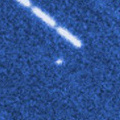
|
It brightened up to 12.8 mag until March (Mar. 21, Michael Mattiazzo). It must have brightened up to 10.5 mag in May and June, but it was not observable. In the Northern Hemisphere, it is appearing in the morning sky. It keeps observable after this while the comet will be fading.
Date(TT) R.A. (2000) Decl. Delta r Elong. m1 Best Time(A, h)
Sept.12 10 26.98 28 58.7 2.629 1.796 27 13.3 4:14 (239, 7)
Sept.19 10 46.23 28 6.3 2.649 1.844 29 13.5 4:20 (242, 9)
|

|
It is fading, but bright as 11.7 mag still now (Sept. 8, Juan Jose Gonzalez). It keeps observable in good condition until winter when the comet becomes fainter than 18 mag.
Date(TT) R.A. (2000) Decl. Delta r Elong. m1 Best Time(A, h)
Sept.12 2 56.00 12 44.7 1.375 2.104 123 13.5 3:35 ( 0, 68)
Sept.19 2 53.42 12 38.4 1.355 2.150 130 13.8 3:05 ( 0, 68)
|

|
Now it is so faint as 17.2 mag (Sept. 4, Jean-Francois Soulier).
Date(TT) R.A. (2000) Decl. Delta r Elong. m1 Best Time(A, h)
Sept.12 17 19.47 -29 31.1 5.882 6.009 92 13.7 19:38 ( 24, 21)
Sept.19 17 21.79 -29 22.6 5.990 6.007 86 13.7 19:27 ( 27, 20)
|

|
Now it is 14.7 mag (Sept. 6, Sandor Szabo). In 2015, it keeps 13-14 mag and will be observable in good condition for a long time.
Date(TT) R.A. (2000) Decl. Delta r Elong. m1 Best Time(A, h)
Sept.12 19 13.13 -13 2.8 3.159 3.751 118 13.7 19:49 ( 0, 42)
Sept.19 19 15.99 -13 26.0 3.270 3.776 112 13.8 19:27 ( 1, 42)
|
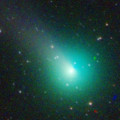
|
It brightened up to 6.0 mag in mid May (May 14, Chris Wyatt). Now it is fading. It has faded down to 9.0 mag in late June (June 21, Marco Goiato). It is appearing in the morning sky. In the Northern Hemisphere, it keeps observable in good condition after this while the comet will be fading. It locates somewhat low in the Southern Hemisphere.
Date(TT) R.A. (2000) Decl. Delta r Elong. m1 Best Time(A, h)
Sept.12 8 41.49 18 47.0 2.699 2.047 40 13.8 4:14 (262, 21)
Sept.19 8 42.10 19 38.6 2.681 2.140 47 13.9 4:20 (265, 29)
|

|
Now it is 14.4 mag and visible visually (Sept. 6, Sandor Szabo). It keeps 13 mag for a long time from 2015 autumn to 2016 summer. In the Northern Hemispehre, it keeps observable in good condition for a long time. It keeps unobservable in the Southern Hemisphere.
Date(TT) R.A. (2000) Decl. Delta r Elong. m1 Best Time(A, h)
Sept.12 6 38.80 56 22.8 3.363 3.256 75 14.5 4:14 (221, 53)
Sept.19 6 49.89 58 44.8 3.236 3.217 79 14.3 4:20 (215, 55)
|

|
Now it is 14.1 mag and visible visually (Aug. 21, Uwe Pilz). Distant object, but it keeps observable at 14-15 mag for a long time from 2015 to 2016.
Date(TT) R.A. (2000) Decl. Delta r Elong. m1 Best Time(A, h)
Sept.12 21 11.75 -4 18.1 4.343 5.227 148 14.4 21:47 ( 0, 51)
Sept.19 21 10.53 -4 49.4 4.384 5.209 141 14.4 21:18 ( 0, 50)
|
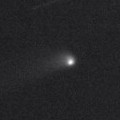
|
Now it is 15.4 mag (Aug. 26, D. Buczynski). It will brighten up to 14 mag from 2015 to 2016. It keeps observable in good condition for a while.
Date(TT) R.A. (2000) Decl. Delta r Elong. m1 Best Time(A, h)
Sept.12 2 41.16 13 17.5 3.501 4.181 126 14.4 3:20 ( 0, 68)
Sept.19 2 31.71 13 44.2 3.405 4.182 135 14.4 2:43 ( 0, 69)
|

|
First return of a periodic comet discovered in 1994. Now it is 15.4 mag (Aug. 27, Mitsunori Tsumura). It will brighten up to 15 mag from summer to autumn, and will be observable in excellent condition in the Southern Hemisphere. It locates somewhat low in the Northern Hemisphere.
Date(TT) R.A. (2000) Decl. Delta r Elong. m1 Best Time(A, h)
Sept.12 22 43.31 -35 10.4 1.562 2.475 148 14.9 23:18 ( 0, 20)
Sept.19 22 39.06 -34 25.4 1.582 2.467 144 14.9 22:47 ( 0, 21)
|
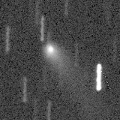
|
Now it is 14.9 mag (Aug. 26, D. Buczynski). It keeps 15 mag for a long time from 2014 to 2015. It is observable in excellent condition in the Northern Hemisphere. It locates low in the Southern Hemisphere.
Date(TT) R.A. (2000) Decl. Delta r Elong. m1 Best Time(A, h)
Sept.12 2 11.00 40 46.4 3.598 4.193 120 15.0 2:50 (180, 84)
Sept.19 2 4.98 42 7.8 3.550 4.216 125 15.0 2:16 (180, 83)
|

|
It passed the perihelion on Sept. 4, and it was detected on the SOHO images. It is not observable from the ground because it locates too close to the Sun.
Date(TT) R.A. (2000) Decl. Delta r Elong. m1 Best Time(A, h)
Sept.12 11 35.34 2 13.3 1.377 0.383 4 15.2 19:38 (104,-16)
Sept.19 12 8.69 -2 23.6 1.581 0.600 7 17.6 19:27 ( 98,-15)
|

|
It is not observable now. It will be observable after mid October in the Northern Hemisphere, or after December in the Southern Hemisphere. It is expected to brighten up to 13 mag from winter to spring. It will be observable in excellent condition in the Southern Hemisphere. But it locates somewhat low in the Northern Hemisphere.
Date(TT) R.A. (2000) Decl. Delta r Elong. m1 Best Time(A, h)
Sept.12 10 40.40 10 26.1 3.325 2.346 11 15.4 4:14 (252, -7)
Sept.19 10 53.77 9 1.6 3.289 2.329 14 15.3 4:20 (256, -4)
|

|
Now it is 16.3 mag (Aug. 24, S. Shurpakov). It will be observable at 15 mag in good condition in autumn.
Date(TT) R.A. (2000) Decl. Delta r Elong. m1 Best Time(A, h)
Sept.12 2 30.79 9 9.8 1.326 2.120 130 15.4 3:09 ( 0, 64)
Sept.19 2 33.21 8 43.6 1.272 2.116 136 15.3 2:44 ( 0, 64)
|

|
Now it is 15.8 mag (Aug. 5, Ken-ichi Kadota). It keeps 15-16 mag for a long time until 2016. It keeps observable in excellent condition in the Northern Hemisphere. It keeps unobservable in the Southern Hemisphere.
Date(TT) R.A. (2000) Decl. Delta r Elong. m1 Best Time(A, h)
Sept.12 5 30.33 57 35.9 5.185 5.189 84 15.7 4:14 (211, 60)
Sept.19 5 33.72 59 4.6 5.093 5.187 89 15.7 4:20 (204, 62)
|

|
It brightened up to 6.9 mag in 2014 autumn (Oct. 17, Marco Goiato). Now it is fading. It has already faded down to 16.2 mag (Aug. 22, K. Hills). In the Southern Hemisphere, it keeps observable in good condition until the comet fades out. In the Northern Hemisphere, it keeps observable until winter, but it locates somewhat low.
Date(TT) R.A. (2000) Decl. Delta r Elong. m1 Best Time(A, h)
Sept.12 23 36.34 -28 15.6 4.001 4.936 155 15.7 0:16 ( 0, 27)
Sept.19 23 27.00 -28 41.8 4.089 5.004 152 15.9 23:34 ( 0, 26)
|
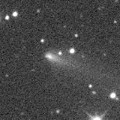
|
Now it is 14.6 mag and visible visually (July 12, Jakub Cerny). It keeps observable in good condition for a while. But it will be fading after this, and will be fainter than 18 mag in November.
Date(TT) R.A. (2000) Decl. Delta r Elong. m1 Best Time(A, h)
Sept.12 0 24.92 3 49.6 1.024 2.004 161 15.8 1:04 ( 0, 59)
Sept.19 0 20.20 3 2.2 1.038 2.035 169 16.0 0:32 ( 0, 58)
|
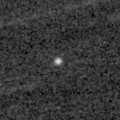
|
Now it is 17.1mag (Aug. 27, A. Maury, J.-G. Bosch, J.-F. Soulier, T. Noel). It is expected to brighten rapidly, and to be observable at 14.5 mag in good condition in autumn.
Date(TT) R.A. (2000) Decl. Delta r Elong. m1 Best Time(A, h)
Sept.12 3 49.35 -5 59.4 0.966 1.642 112 16.1 4:14 (355, 49)
Sept.19 4 3.38 -6 36.4 0.905 1.613 115 15.9 4:14 ( 0, 48)
|

|
It brightened up to 13 mag in 2014. Now it is 16.3 mag (Aug. 27, A. Maury, J.-G. Bosch, J.-F. Soulier, T. Noel). It will be fading slowly after this. It is observable at 16 mag in excellent condition from summer to winter in 2015.
Date(TT) R.A. (2000) Decl. Delta r Elong. m1 Best Time(A, h)
Sept.12 1 35.91 1 30.2 3.005 3.875 145 16.0 2:15 ( 0, 57)
Sept.19 1 32.58 1 10.5 2.971 3.890 152 16.0 1:44 ( 0, 56)
|
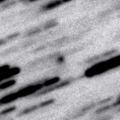
|
It brightened up to 16.4 mag in 2014 (Nov. 14, J. F. Hernandez). Now it is 17.2 mag (Aug. 27, D. Buczynski). It will be observable at 16 mag again from summer to autumn in 2015. However, it is fainter than this ephemeris recently.
Date(TT) R.A. (2000) Decl. Delta r Elong. m1 Best Time(A, h)
Sept.12 4 17.29 27 42.5 2.072 2.476 101 16.1 4:14 (306, 79)
Sept.19 4 21.65 28 0.6 2.014 2.501 107 16.1 4:20 (338, 83)
|

|
Now it is 15.1 mag (July 13, Yuji Ohshima). It is observable at 15-16 mag in good condition until autumn. It locates somewhat low in the Northern Hemisphere.
Date(TT) R.A. (2000) Decl. Delta r Elong. m1 Best Time(A, h)
Sept.12 17 35.92 -26 2.1 8.103 8.267 95 16.3 19:38 ( 21, 26)
Sept.19 17 35.00 -26 16.2 8.258 8.299 88 16.4 19:27 ( 25, 24)
|

|
No observations have been reported after November in 2014. Current brightness is uncertain. It must keep 16 mag for a long time from 2015 autumn to 2016 summer. It keeps observable in excellent condition in the Southern Hemisphere. It locates low in the Northern Hemisphere.
Date(TT) R.A. (2000) Decl. Delta r Elong. m1 Best Time(A, h)
Sept.12 2 55.67 -19 11.7 2.347 3.039 125 16.7 3:34 ( 0, 36)
Sept.19 2 43.05 -22 51.7 2.239 3.002 131 16.5 2:54 ( 0, 32)
|

|
Now it is 17.5 mag (July 25, Katsumi Yoshimoto). It has brightened in outburst up to 14 mag twice, in 2006 January and 2011 May. It is around the perihelion now. It keeps observable at 17 mag for a long time after this.
Date(TT) R.A. (2000) Decl. Delta r Elong. m1 Best Time(A, h)
Sept.12 23 15.93 -4 14.1 4.850 5.857 179 16.8 23:51 ( 0, 51)
Sept.19 23 13.42 -4 33.5 4.865 5.861 171 17.0 23:21 ( 0, 50)
|

|
Now it is 15.9 mag (Aug. 20, Catalina Sky Survey). It is fading, but it is observable at 17 mag in good condition until late autumn. The fragments B and C are already fainter than 20 mag (June 12, Takaaki Oribe).
Date(TT) R.A. (2000) Decl. Delta r Elong. m1 Best Time(A, h)
Sept.12 23 5.15 3 56.9 5.403 6.399 170 16.9 23:40 ( 0, 59)
Sept.19 23 0.20 2 55.4 5.458 6.444 168 17.0 23:07 ( 0, 58)
|

|
Now it is 18.3 mag (Aug. 18, Jean-Francois Soulier). It will be observable at 17 mag in good condition from summer to autumn.
Date(TT) R.A. (2000) Decl. Delta r Elong. m1 Best Time(A, h)
Sept.12 23 39.02 -6 19.2 1.479 2.483 174 17.1 0:18 ( 0, 49)
Sept.19 23 35.97 -6 56.2 1.477 2.479 174 17.0 23:43 ( 0, 48)
|

|
No observations have been reported after November in 2014. It will brighten up to 11 mag from spring to summer in 2016. In the Northern Hemisphere, it keeps observable in good condition while the comet will be brightening. It locates somewhat low in the Southern Hemisphere.
Date(TT) R.A. (2000) Decl. Delta r Elong. m1 Best Time(A, h)
Sept.12 5 37.93 20 13.6 3.011 3.071 83 17.2 4:14 (291, 59)
Sept.19 5 44.26 20 11.7 2.875 3.033 89 17.0 4:20 (299, 64)
|
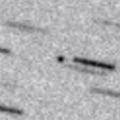
|
Now it is 16.3 mag (Aug. 22, E. Bryssinck). In the Northern Hemisphere, it is getting higher gradually in the morning sky. It is not observable in the Southern Hemisphere.
Date(TT) R.A. (2000) Decl. Delta r Elong. m1 Best Time(A, h)
Sept.12 7 53.05 37 57.9 1.697 1.433 57 17.1 4:14 (247, 39)
Sept.19 8 17.68 38 40.3 1.699 1.474 59 17.2 4:20 (246, 41)
|

|
It has not been recovered yet. But it must be already bright as 17.5 mag. It will approach to the earth from autumn to winter, and it is expected to brighten up to 15 mag and observable in excellent condition.
Date(TT) R.A. (2000) Decl. Delta r Elong. m1 Best Time(A, h)
Sept.12 4 10.85 -7 11.2 1.329 1.891 107 17.4 4:14 (347, 47)
Sept.19 4 21.31 -7 7.2 1.247 1.857 110 17.2 4:20 (356, 48)
|

|
Now it is 16.0 mag (Aug. 20, Catalina Sky Survey). It keeps observable in good condition until the comet fades out. In 2014, it must have been observable at 14 mag in good condition in the Southern Hemisphere.
Date(TT) R.A. (2000) Decl. Delta r Elong. m1 Best Time(A, h)
Sept.12 0 32.40 2 23.2 3.265 4.227 160 17.3 1:11 ( 0, 57)
Sept.19 0 27.45 2 26.9 3.290 4.278 168 17.4 0:39 ( 0, 58)
|
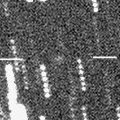
|
Now it is 18.8 mag (Aug. 10, A. Sodor, K. Sarneczky). It was predicted to be observable at 17.5 mag in good condition from autumn to winter, but it is a bit fainter actually.
Date(TT) R.A. (2000) Decl. Delta r Elong. m1 Best Time(A, h)
Sept.12 18 24.02 14 38.7 1.274 1.812 104 17.6 19:38 ( 25, 68)
Sept.19 18 31.72 11 17.4 1.282 1.778 101 17.5 19:27 ( 26, 64)
|
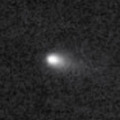
|
It brightened up to 15.9 mag in June as predicted (June 23, Ken-ichi Kadota). It was expected to be observable at 13 mag in good condition from summer to autumn. However, Jean-Gabriel Bosch detected the comet became disintegrating in July. Now it is so faint as 19.3 mag (Aug. 26, W. Hasubick). The fragment D and B are also observed as 19.4 mag (July 28, iTelescope Observatory, Siding Spring) and 20.9 mag (Aug. 21, Pan-STARRS 1, Haleakala) respectively.
Date(TT) R.A. (2000) Decl. Delta r Elong. m1 Best Time(A, h)
Sept.12 2 22.59 3 12.3 0.871 1.725 133 17.6 3:01 ( 0, 58)
Sept.19 2 25.04 3 15.9 0.847 1.738 139 17.5 2:36 ( 0, 58)
|

|
First return of a periodic comet discovered in 2008. It approached to the earth and brightened up to 16 mag from spring to summer (June 2, WISE). Now it is fading. It has already faded down to 17.9 mag (Aug. 13, W. Hasubick).
Date(TT) R.A. (2000) Decl. Delta r Elong. m1 Best Time(A, h)
Sept.12 3 54.78 -9 19.4 0.799 1.496 111 17.6 4:14 (353, 46)
Sept.19 3 56.32 -10 10.2 0.807 1.546 116 17.7 4:07 ( 0, 45)
|

|
It will brighten up to 14 mag in 2016 summer. But it is not observable at the highlight. It keeps observable until March while the comet will be brightening gradually up to 15-16 mag.
Date(TT) R.A. (2000) Decl. Delta r Elong. m1 Best Time(A, h)
Sept.12 0 52.67 -1 44.1 1.882 2.833 156 17.7 1:32 ( 0, 53)
Sept.19 0 48.82 -2 36.2 1.824 2.802 163 17.6 1:00 ( 0, 53)
|
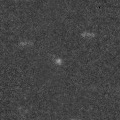
|
Now it is 17.1 mag (Aug. 23, E. Bryssinck). It was expected to brighten rapidly, and to be observable at 16 mag in good condition from summer to winter. But actually, it is much fainter than predicted.
Date(TT) R.A. (2000) Decl. Delta r Elong. m1 Best Time(A, h)
Sept.12 23 4.21 -12 37.4 1.319 2.319 171 17.8 23:39 ( 0, 43)
Sept.19 22 56.37 -12 2.2 1.303 2.287 164 17.7 23:03 ( 0, 43)
|
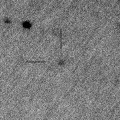
|
Now it is 18.9 mag (Aug. 25, S. Shurpakov). Now it is near the aphelion. It is observable at 17 mag in good condition from autumn to winter.
Date(TT) R.A. (2000) Decl. Delta r Elong. m1 Best Time(A, h)
Sept.12 3 54.79 16 35.0 3.931 4.358 108 17.8 4:14 (346, 71)
Sept.19 3 55.36 16 36.1 3.825 4.350 115 17.7 4:06 ( 0, 72)
|

|
Now it is 17.8 mag (Aug. 19, A. Diepvens). It was observed at 17 mag in 2014 summer. In the Northern Hemisphere, it is observable at 17.5 mag in excellent condition also in 2015. It is not observable in the Southern Hemisphere.
Date(TT) R.A. (2000) Decl. Delta r Elong. m1 Best Time(A, h)
Sept.12 21 52.02 51 21.6 4.041 4.643 121 17.7 22:27 (180, 74)
Sept.19 21 49.54 50 7.5 4.057 4.676 122 17.7 21:57 (180, 75)
|

|
Now it is 16.5 mag (Aug. 8, J. Oey, P. Camilleri, H. Williams). It will be fading after this, and will be fainter than 18 mag in October.
Date(TT) R.A. (2000) Decl. Delta r Elong. m1 Best Time(A, h)
Sept.12 17 0.79 -22 16.9 3.186 3.301 87 17.7 19:38 ( 31, 26)
Sept.19 17 7.29 -22 12.5 3.293 3.312 82 17.8 19:27 ( 33, 25)
|
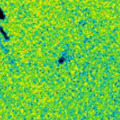
|
New comet. It is brightest now. It will be fading rapidly after October. It is observable in excellent condition in the SOuthern Hemisphere. But it will be unobservable soon in the Northern Hemisphere.
Date(TT) R.A. (2000) Decl. Delta r Elong. m1 Best Time(A, h)
Sept.12 1 30.96 -56 51.8 1.080 1.820 121 17.8 2:12 ( 0, -1)
Sept.19 0 14.69 -64 22.2 1.130 1.823 117 17.9 0:31 ( 0, -9)
|
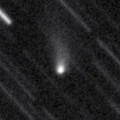
|
It brightened up to 15.3 mag in winter (Jan. 17, Taras Prystavski). Now it is fading. It has already faded down to 16.6 mag (Aug. 18, Catalina Sky Survey). It keeps observable in good condition for a while. But it will be fainter than 18 mag in September.
Date(TT) R.A. (2000) Decl. Delta r Elong. m1 Best Time(A, h)
Sept.12 21 24.98 -9 48.3 2.116 3.038 151 17.8 21:59 ( 0, 45)
Sept.19 21 11.61 -9 1.0 2.245 3.095 141 18.0 21:19 ( 0, 46)
|

|
It will pass the perihelion in 2019. However, it has not been brightening since the discovery in 2010. Now it is 18.3 mag (Aug. 23, S. Shurpakov). It keeps observable in excellent condition from autumn to next spring in the Northern Hemisphere. It is not observable in the Southern Hemisphere.
Date(TT) R.A. (2000) Decl. Delta r Elong. m1 Best Time(A, h)
Sept.12 3 53.65 45 1.0 10.906 11.151 101 17.9 4:14 (198, 79)
Sept.19 3 52.97 45 25.8 10.780 11.126 107 17.9 4:04 (180, 80)
|
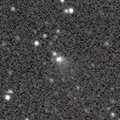
|
It brightened up to 15.6 mag from spring to summer (July 8, Taras Prystavski). Now it is fading. It has already faded down to 16.8 mag (Aug. 21, B. Haeusler). It will be fainter than 18 mag in September.
Date(TT) R.A. (2000) Decl. Delta r Elong. m1 Best Time(A, h)
Sept.12 17 49.04 -9 12.7 1.410 1.846 98 17.9 19:38 ( 24, 43)
Sept.19 18 2.73 -9 35.5 1.487 1.866 95 18.1 19:27 ( 25, 42)
|
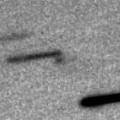
|
Now it is 17.8 mag (Aug. 14, Space Surveillance Telescope, Atom Site). It will be fading after this.
Date(TT) R.A. (2000) Decl. Delta r Elong. m1 Best Time(A, h)
Sept.12 3 31.46 8 18.4 1.091 1.776 115 17.9 4:10 ( 0, 63)
Sept.19 3 35.27 7 36.6 1.067 1.808 121 18.0 3:46 ( 0, 63)
|
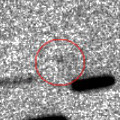
|
Now it is 19.2 mag (Aug. 26, W. Hasubick). First return of a comet re-discovered after 112-year blank in 2008. It brightened up to 12 mag in 2008. In this apparition, it was expected to brighten up to 15 mag from spring to summer, but it is much fainter than predicted.
Date(TT) R.A. (2000) Decl. Delta r Elong. m1 Best Time(A, h)
Sept.12 4 40.54 9 31.1 1.535 1.957 98 18.3 4:14 (326, 61)
Sept.19 4 46.61 8 26.0 1.503 1.998 103 18.4 4:20 (340, 62)
|

|
It was expected to brighten rapidly up to 15 mag in August. But actually, it is so faint as 19.7 mag, much fainter than predicted (Aug. 15, Slooh.com Canary Islands Observatory).
Date(TT) R.A. (2000) Decl. Delta r Elong. m1 Best Time(A, h)
Sept.12 18 55.09 -2 51.7 0.193 1.100 114 18.6 19:38 ( 1, 52)
Sept.19 20 3.42 0 4.7 0.223 1.147 124 19.0 20:16 ( 0, 55)
|
|
![]()
 116P/Wild 4
116P/Wild 4 61P/Shajn-Schaldach
61P/Shajn-Schaldach C/2013 V4 ( Catalina )
C/2013 V4 ( Catalina ) C/2012 K1 ( PanSTARRS )
C/2012 K1 ( PanSTARRS ) 57P/du Toit-Neujmin-Delporte
57P/du Toit-Neujmin-Delporte 230P/LINEAR
230P/LINEAR 117P/Helin-Roman-Alu 1
117P/Helin-Roman-Alu 1 44P/Reinmuth 2
44P/Reinmuth 2 C/2010 S1 ( LINEAR )
C/2010 S1 ( LINEAR ) C/2014 W5 ( Lemmon-PanSTARRS )
C/2014 W5 ( Lemmon-PanSTARRS ) 174P/(60558) 2000 EC98 ( Echeclus )
174P/(60558) 2000 EC98 ( Echeclus ) C/2011 J2 ( LINEAR )
C/2011 J2 ( LINEAR ) 151P/Helin
151P/Helin 81P/Wild 2
81P/Wild 2 162P/Siding Spring
162P/Siding Spring P/2003 WC7 ( LINEAR-Catalina )
P/2003 WC7 ( LINEAR-Catalina ) C/2015 K1 ( MASTER )
C/2015 K1 ( MASTER ) 327P/2015 P2 ( Van Ness )
327P/2015 P2 ( Van Ness ) 51P/Harrington
51P/Harrington 319P/2015 G1 ( Catalina-McNaught )
319P/2015 G1 ( Catalina-McNaught ) 118P/Shoemaker-Levy 4
118P/Shoemaker-Levy 4 50P/Arend
50P/Arend 74P/Smirnova-Chernykh
74P/Smirnova-Chernykh C/2013 G3 ( PanSTARRS )
C/2013 G3 ( PanSTARRS ) 299P/2014 D2 ( Catalina-PanSTARRS )
299P/2014 D2 ( Catalina-PanSTARRS ) P/2015 Q2 ( Pimentel )
P/2015 Q2 ( Pimentel ) C/2014 AA52 ( Catalina )
C/2014 AA52 ( Catalina ) C/2010 U3 ( Boattini )
C/2010 U3 ( Boattini ) 221P/LINEAR
221P/LINEAR 220P/McNaught
220P/McNaught 205P/Giacobini
205P/Giacobini 320P/2015 HC10 ( McNaught )
320P/2015 HC10 ( McNaught )![]()















































